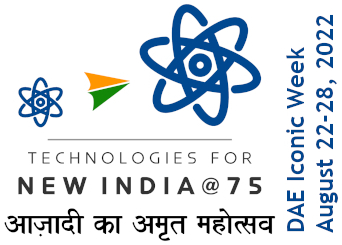Biographical Memoirs :: MEGHNAD SAHA
In the early twenties R. H. Fowler (in collaboration with C. G. Darwin) developed a very powerful method in statistical mechanics permitting a systematic exposition and working out of the equilibrium properties of matter. He used this to provide a (rigorous) derivation of the ionization formula which as described earlier Saha had obtained by extending (and justifiably) to ionization of atoms the theorem of van't Hoff, well known in physical chemistry for its application to molecular dissociation. Also, a significant improvement in the Saha equation introduced by Fowler was to include the effect of the excited states of atoms and ions. Further, it marked an important step forward when in 1923 E. A. Milne and R. H. Fowler in a paper in the Monthly Notices of the Royal Astronomical Society showed that the criterion of the maximum intensity of absorption lines (belonging to subordinate series of a neutral atom) was much more fruitful in giving information about physical parameters of stellar atmospheres than the criterion employed by Saha which consisted in the marginal appearance or disappearance of absorption lines. (The latter criterion requires some knowledge of the relevant pressures in the stellar atmospheres, and Saha following the generally accepted view at the time assumed a value of the order of 1 to 0.1 atmosphere.) To quote from E. A.Milne5 : `Saha had concentrated on the marginal appearances and disappearances of absorption lines in the stellar sequence, assuming an order of magnitude for the pressure in a stellar atmosphere and calculating the temperature where increasing ionization, for example, inhibited further absorption of the line in question owing to the loss of the series electron. As Fowler and I were one day stamping round my rooms in Trinity and discussing this, it suddenly occurred to me that the maximum intensity of the Balmer lines of hydrogen, for example, was readily explained by the consideration that at the lower temperatures there were too few excited atoms to give appreciable absorption, whilst at the higher temperatures there are too few neutral atoms left to give any absorption. ..That evening I did a hasty order of magnitude calculation of the effect and found that to agree with a temperature of 10000o for the stars of type AO, where the Balmer lines have their maximum, a pressure of the order of 10-4 atmosphere was required. This was very exciting, because standard determinations of pressures in stellar atmospheres from line shifts and line widths had been supposed to indicate a pressure of the order of one atmosphere or more, and I had begun on other grounds to disbelieve this.'
In November 1921 Saha returned from Europe and joined the University of Calcutta as Khaira Professor of Physics, a new chair created from the endowment of Kumar Guruprasad Singh of Khaira. In 1923 Saha left Calcutta to take up the appointment of Professor and Head of the Physics Department in the University of Allahabad. He held this appointment for 15 years. At Allahabad he gave a large part of his time to teaching - he regularly lectured to undergraduate and postgraduate classes. His lectures were systematically and carefully prepared, and a very large part of what he spoke, he wrote on the blackboard in his characteristically clear and bold handwriting. He made copious use of lantern slides, and was fond of demonstration experiments6.
5 E.A.Milne, Obituary Notice of R. H. Fowler (1889-1944), Obituary Notices of the Fellows of the Royal Society, 5, 61-78 (1945)
6 Saha quoted the following rather remarkable passage from the 9th century Sanskrit work , Rasendra Chintamani: "I have much from the lips of savants, I have seen many (formulae) well established in Scriptures, but I am not recording any which I have not done myself.
"I am only recording those fearlessly, which I have carried out before my elders, with my own hand. They are alone to be regarded as real teachers ,who can show by experiments what they teach. They are observing pupils, who, having learnt from their teachers can actually perform them and improve upon them. The rest are merely stage-actors."




